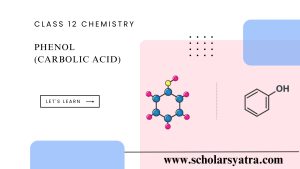Do you ever know the depth insights, into what are antibiotics in actual life? Antibiotics are powerful medications designed to combat bacterial infections. Discovered in the early 20th century, antibiotics have revolutionized modern medicine, making it possible to treat bacterial infections that were once fatal. Let’s guys, have a look at this overview of antibiotics.
Table of Contents
ToggleWhat Are Antibiotics?
Antibiotics are compounds, either naturally derived from microorganisms or synthetically produced, that inhibit or kill bacteria. While they are effective against bacterial infections, antibiotics do not work on viral infections like the common cold or flu. Their use has allowed for the safe treatment of previously life-threatening infections, the prevention of post-surgical infections, and even the management of certain chronic illnesses. Penicillin was the first antibiotic discovered from mold a type of fungus by Alexender Fleming.
Major types of Antibiotics
Antibiotics can be classified in several ways, each providing insight into their structure, target, and mode of action. The most common classifications are based on:
- Spectrum of Activity
- Mode of Action
- Chemical Structure
- Mechanism of Resistance
1. Classification by Spectrum of Activity
- Broad-Spectrum Antibiotics: Effective against a wide range of bacteria, both Gram-positive and Gram-negative. Examples include amoxicillin and tetracycline.
- Narrow-Spectrum Antibiotics: Target specific types of bacteria, usually either Gram-positive or Gram-negative. Examples include penicillin and vancomycin.
Broad-spectrum antibiotics are valuable in treating infections with unknown bacterial origins, while narrow-spectrum antibiotics are ideal for targeted therapy to minimize antibiotic resistance.
2. Classification by Mode of Action
- Bactericidal Antibiotics: These antibiotics kill bacteria directly by disrupting essential cellular processes.
- Bacteriostatic Antibiotics: These inhibit bacterial growth, allowing the immune system to eliminate the infection.
3. Classification by Chemical Structure
- Beta-Lactams: Beta-lactam antibiotics are available in a wide range and seem to exist solely to perplex both students and clinicians.Includes penicillins, cephalosporins, and carbapenems. These antibiotics work by disrupting bacterial cell wall synthesis.
- Macrolides: A class of antibiotics known as macrolide antibiotics is frequently used to treat both acute and recurrent infections. Azithromycin, clarithromycin, erythromycin, and roxithromycin are the four macrolides that are most commonly used. Includes erythromycin and azithromycin. They inhibit bacterial protein synthesis.
- Aminoglycosides: Aminoglycosides bind with a high affinity to the A-site on the 30S ribosome’s 16S ribosomal RNA to limit protein synthesis. It includes gentamicin and streptomycin. They also target bacterial protein synthesis but have a different mechanism than macrolides.
- Fluoroquinolones: Fluoroquinolones are a powerful class of broad-spectrum antibiotics used to treat various bacterial infections. It includes ciprofloxacin and levofloxacin. They work by inhibiting bacterial DNA synthesis.
- Tetracyclines: Tetracyclines are a class of broad-spectrum antibiotics effective against a variety of bacteria, including both Gram-positive and Gram-negative strains. It also includes tetracycline and doxycycline. They inhibit protein synthesis by binding to the bacterial ribosome.
4. Classification by Mechanism of Resistance
This classification is essential for understanding and addressing antibiotic resistance, which poses a growing global health threat.
- Enzyme Inactivation: Some bacteria produce enzymes that deactivate antibiotics, like beta-lactamase for beta-lactams.
- Target Modification: Bacteria can modify the antibiotic target, rendering the drug ineffective.
- Efflux Pumps: Bacteria use efflux pumps to remove antibiotics from the cell, reducing drug concentration.
- Impermeability: Certain bacteria possess cell walls that prevent antibiotics from entering.
Mechanism of Antibiotic Action
The mechanism of antibiotic action describes how antibiotics interact with bacterial cells to inhibit growth or induce death. The primary mechanisms include:
- Inhibition of Cell Wall Synthesis
- Antibiotics like penicillin, cephalosporins, and carbapenems target the cell wall, preventing its formation. This leads to cell lysis (bursting) due to the high internal pressure in bacterial cells.
- Inhibition of Protein Synthesis
- Antibiotics like tetracyclines, macrolides, and aminoglycosides bind to the bacterial ribosome, disrupting protein production, which is vital for bacterial survival and replication.
- Inhibition of Nucleic Acid Synthesis
- Fluoroquinolones and rifamycins inhibit DNA and RNA synthesis by targeting enzymes critical to the replication process, such as DNA gyrase and RNA polymerase.
- Inhibition of Metabolic Pathways
- Sulfonamides and trimethoprim disrupt folate synthesis, an essential pathway in bacteria for DNA and RNA production.
- Disruption of Cell Membrane Integrity
- Polymyxins act by altering the bacterial cell membrane, causing cell contents to leak, and leading to cell death.
Applications of Antibiotics
Antibiotics have a wide range of applications across healthcare and agriculture for every living organism. Some of the common uses include:
- Treatment of Bacterial Infections
- Antibiotics are commonly used to treat infections like strep throat, urinary tract infections, pneumonia, and skin infections.
- Prevention of Infections in Surgery
- Prophylactic antibiotics are often administered before surgeries to prevent potential infections, especially in high-risk or invasive surgeries.
- Treatment of Chronic Diseases
- For conditions like tuberculosis (TB) and certain types of bacterial pneumonia, antibiotics are part of long-term treatment plans to manage or eradicate the infection.
- Agriculture and Veterinary Use
- Antibiotics are also used in animal husbandry to prevent disease and promote growth. However, this use is controversial due to the potential development of antibiotic resistance that can affect humans.
- Biotechnological Research
- Antibiotics like streptomycin and ampicillin are essential in lab environments for studying bacterial genetics and cell cultures, helping scientists develop new drugs and therapeutic interventions.
The Growing Concern of Antibiotic Resistance
One of the greatest challenges with antibiotics today is the rise of antibiotic-resistant bacteria. Overuse and misuse of antibiotics in humans, agriculture, and veterinary medicine have accelerated the evolution of resistant bacteria. Common bacteria such as Staphylococcus aureus and Escherichia coli now have strains that resist multiple antibiotics, making infections harder to treat.
Addressing this requires both prudent use of antibiotics and the development of new antimicrobial agents, as well as global strategies in healthcare and agriculture to minimize unnecessary antibiotic exposure.







